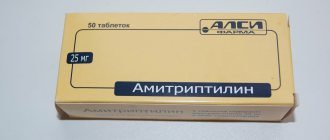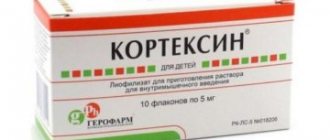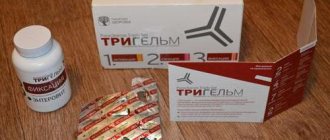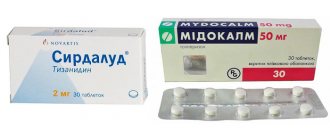Composition and release form of Exelon
Exelon is available in two dosage forms:
- Opaque capsules containing the active ingredient - rivastigmine in a dosage of 1.5 mg, 3 mg, 4.5 mg or 6 mg. Additional components: colloidal silicon dioxide, microcrystalline cellulose, magnesium stearate, hypromellose. Blisters contain 14 capsules.
- Yellow solution for internal use containing the active substance – rivastigmine 2 mg. Additional components: anhydrous citric acid, sodium benzoate, sodium citrate, purified water, yellow quinoline WS, dihydrate powder. In dark glass bottles of 50 ml.
How much does the patch cost?
Of course, for many patients, an important issue is the cost of a particular drug. So how much does the Exelon patch cost? The price will depend on many factors
In particular, you need to take into account the manufacturer, dosage of the active substance, etc.
A pack of 30 patches costs about 3600-4500 rubles. As a rule, this amount of the drug is enough for a month. By the way, it must be said that in some clinics this medicine is given free of charge, on prescription, to patients with Alzheimer's disease (ask your doctor for this information).
pharmachologic effect
According to the instructions, Exelon is a selective inhibitor of acetyl- and butyrylcholinesterase in the brain. The drug is used to treat Alzheimer's disease, as well as to treat dementia in Parkinson's disease. The use of rivastigmine inhibits the destruction of acetylcholine produced by neurons. In addition, rivastigmine increases the content of acetylcholine in the cerebral cortex and hippocampus, which significantly improves cholinergic nerve transmission.
According to reviews, Exelon has a positive effect in cases of decreased cognitive function caused by a lack of acetylcholine, in particular in dementia caused by Alzheimer's disease or Parkinson's disease.
In addition, there is evidence that the use of the drug slows down the formation of amyloid plaques, which are the main pathological sign of Alzheimer's disease.
Indications for use
In modern medicine, this drug is used quite often, but the indications for its use are quite specific - mild or moderate dementia in Alzheimer's disease. At the same time, the use of the patch is possible both in the presence of the disease and in cases where its development is suspected (in this case, it helps to slow down the manifestations of the disease).
Contraindications
Exelon is contraindicated:
- in case of hypersensitivity to the active or additional components of the drug;
- under the age of 18;
- with severe liver dysfunction.
According to reviews, Exelon should be used with caution when:
- conduction disorders (AV block, sinoatrial block);
- predisposition to urinary tract obstruction;
- history of bronchial asthma or other respiratory diseases.
It is not recommended to prescribe Exelon simultaneously with other cholinomimetics.
Subtleties of use
The patch that delivers rivastigmine to the patient’s body should not be applied to the same point every day. It is advisable to select several suitable zones and alternate them. The patch is re-attached to the same area only 14 days after the previous use on this part. In general, according to doctors, the patient should develop the habit of using the product. This will greatly simplify the treatment process both for the patient and for the loved ones and caregivers helping him.
The patch should not be used if the patient is receiving other medications with a cholinomimic effect, anticholinergics. If the doctor prescribes the patch, you must inform him of all medications the patient is already using. If the person using the patch will soon undergo surgery, you need to inform your doctor about the fact of using the transdermal system. The compounds contained in the patch may enhance the effects of some muscle relaxants used for anesthesia.
Method of use of Exelon and dosage regimen
According to the instructions, Exelon is used orally twice a day - during breakfast and dinner.
The starting dosage of Exelon is usually 1.5 mg twice daily. If patients are hypersensitive to the effects of cholinergic drugs, it is recommended to set the initial dosage to 1 mg twice daily.
If after two weeks of therapy the patient does not experience any side effects from the drug, the dosage can be increased to 3 mg twice a day. If this dosage is well tolerated, it is increased first to 4.5 mg, and then to 6 mg twice a day. The interval after each dosage increase should not be less than two weeks.
The maintenance dosage of Exelon ranges from 1.5 to 6 mg twice a day. The maximum dosage is 6 mg twice a day.
If the break in taking Exelon is several days, then you need to start taking it again with a minimum dosage in order to avoid the risk of unwanted side effects.
Exelon Transdermal therapist sist 13.3 mg/24h N30 (Novartis)
Therapy with the drug should only be carried out under the supervision of a physician experienced in treating patients with dementia and under the supervision of persons caring for the patients. Patients and their caregivers should be instructed in the use of the drug by competent healthcare professionals. The amount of rivastigmine contained and released depending on the dosage of TTC Exelon® is presented in Table 1. Table 1. TTC Exelon® Amount of rivastigmine contained Amount of rivastigmine released in vivo within 24 hours TTS Exelon® 4.6 mg/24 hours 9 mg 4.6 mg TTS Exelon® 9.5 mg/24 hours 18 mg 9.5 mg TTS Exelon® 13.3 mg/24 hours 27 mg 13.3 mgMild or moderate dementia of the Alzheimer's type. Initial dose and selection of the recommended effective dose: Treatment with the drug should begin with the use of TTC Exelon® 4.6 mg/24 hours 1 time per day. After a minimum of 4 weeks of treatment, if well tolerated, the dose of the drug should be increased to the recommended effective dose by using TTC Exelon® 9.5 mg/24 hours, which can be used as long as the therapeutic effect remains. Dose escalation: For long-term treatment, if the patient has therapeutic efficacy, the use of TTC Exelon® 9.5 mg/24 hours is recommended. If the drug is well tolerated and at least after 6 months of treatment with TTC Exelon® 9.5 mg/24 hours , the attending physician, if necessary to achieve an additional therapeutic effect, may increase the dose to 13.3 mg/24 hours in patients who, despite the use of TTS Exelon® 9.5 mg/24 hours, experience significant impairment of cognitive functions (for example, deterioration in results according to KSHOPS) and/or deterioration in functional status (based on a subjective assessment by a doctor). Severe dementia of the Alzheimer's type Initial dose and selection of the recommended effective dose: Treatment with the drug should begin with the use of TTC Exelon® 4.6 mg/24 hours 1 time per day. The dose of the drug should be sequentially increased first to 9.5 mg/24 hours, and then to an effective dose of 13.3 mg/24 hours. Each dose increase is possible only after a minimum of 4 weeks and if the previous dose is well tolerated. Doses above 13.3 mg/24 hours do not provide significant benefit, but increase the incidence of side effects. Interruption of treatment: The clinical effect of therapy with Exelon® TTC should be regularly assessed. If there is no clinical effect from therapy when using optimal doses of TTC Exelon®, drug therapy should be discontinued. Treatment with the drug should be temporarily discontinued if adverse events from the digestive system occur and/or existing extrapyramidal symptoms (including tremor) worsen until they resolve. If the break in the use of the drug was no more than three days, you can resume using the drug at the same dose. In case of a longer withdrawal period, treatment should be resumed with the initial dose (Exelon® TTC 4.6 mg/24 hours). Patients treated with rivastigmine in the form of capsules or oral solution may switch to TTC Exelon® treatment as follows: In patients receiving oral rivastigmine therapy at a dose of less than or equal to 6 mg per day, treatment should begin with TTC Exelon® 4.6 mg/24 hours. In patients receiving oral therapy with rivastigmine at a stable and well-tolerated dose of 9 mg per day, treatment can begin immediately with the use of TTS Exelon® 9.5 mg/24 hours. But if oral therapy has not been stable and well tolerated, it is recommended to start the transition to the transdermal form with a dose of 4.6 mg/24 hours. In patients receiving oral therapy with rivastigmine at a dose of 12 mg per day, treatment can begin immediately with the use of TTS Exelon® 9.5 mg/24 hours After a minimum of 4 weeks of treatment, if well tolerated, the dose of TTC Exelon® 4.6 mg/24 hours can be increased by using TTC Exelon® 9.5 mg/24 hours. Treatment with TTC Exelon® is recommended to begin the next day after the last oral dose of rivastigmine. Patients weighing less than 50 kg Patients weighing less than 50 kg were more likely to develop adverse events (AEs) and discontinuation of therapy due to AEs, so when increasing the dose in this group of patients, care should be taken Use extreme caution to carefully titrate the dose and monitor for the development of AEs (eg, excessive nausea or vomiting), and consider reducing the dose of TTC Exelon to 4.6 mg/24 hours if such AEs occur. Particular care should be taken when titrating the dose above the recommended effective dose of TTC Exelon® 9.5 mg/24 hours. Patients with impaired liver function No adjustment of the dosage regimen of TTC Exelon® is required. However, due to the increased exposure of rivastigmine observed when rivastigmine was taken orally in patients with mild to moderate hepatic impairment, it is recommended that the dose of rivastigmine be carefully titrated to individual tolerance in these patients. The use of TTC Exelon® in patients with severe hepatic impairment has not been studied. Particular care should be taken when titrating the dose in patients in this category (see sections “Special instructions”, “Pharmacological properties”). Patients with clinically significant liver dysfunction may experience a more frequent development of dose-dependent adverse events, and therefore, in patients in this category, the use of TTS Exelon® 4.6 mg/24 hours should be considered as the initial and maximum dose. Patients with impairments renal function No adjustment of the TTC Exelon® dosage regimen is required. However, due to the increased exposure of rivastigmine observed when oral rivastigmine was taken in patients with mild to moderate renal impairment, it is recommended that the dose of rivastigmine be carefully titrated to individual tolerance in these patients. Patients with clinically significant impairment of renal function may experience a more frequent development of dose-dependent adverse events, and therefore in patients in this category the possibility of using TTC Exelon® 4.6 mg/24 hours should be considered as the initial and maximum dose. Use in children The use of rivastigmine in children has not been studied, so the drug is not recommended for children. INSTRUCTIONS FOR USE ATTENTION!!! Each subsequent Exelon® transdermal therapeutic system (TTS) should be applied only after the previous one has been removed. Only one Exelon® TTS can be used at a time. TTC Exelon® must not be cut or divided into parts, or damaged in any way. TTC Exelon® should be pressed firmly with the palm of your hand at the attachment site for at least 30 seconds. Place of attachment of TTS Ekselon® TTS Ekselon® is glued to clean, dry, intact skin with minimal hair. Do not use creams, lotions, oils, powders or other skin care products in the area where the drug is attached to prevent it from coming off. TTC Exelon® should not be applied to red, rash-covered, irritated or damaged skin. You should stick only one TTC Exelon® per day on only one of the body areas shown below in Figure 1: - Left or right shoulder; - Upper chest left or right (should not be applied to the breast area); - Upper back left or right; - Lower back left or right. Rice. 1 Every 24 hours, remove the previous Exelon® TTC before applying one new Exelon® TTC to one of the body areas shown below. To avoid skin irritation, each subsequent Exelon® TTS should be glued to a different area of the skin (possibly within the same anatomical area). For example, if you attached the Exelon® TTC to the right lumbar region, then next time place the system on the left. To minimize the risk of skin irritation, TTC can be applied to the same area of skin only at intervals of two weeks. How to apply TTC Exelon® TTC Exelon® is a thin, opaque, plastic patch for sticking to the skin. Do not remove the Exelon® TTC from the sealed bag or remove the previous Exelon® TTC unless you plan to attach a new one. The drug should be used immediately after removal from the sealed package. Carefully remove the previous Exelon® TTS. If you are starting treatment with the drug for the first time or resuming treatment with the drug after a break, please follow the instructions for attaching TTC Exelon®, starting with the following picture below. The drug is removed from the sealed bag immediately before use. To remove the Exelon® TTC, cut the bag along the dotted line or groove indicated. The adhesive side of TTS Exelon® is covered with a protective film. Carefully remove the protective film on one side that protects the adhesive side of the Exelon® TTC without touching the adhesive surface. Immediately after removing the protective film, apply TTC Exelon® to the skin of the upper or lower half of the back, shoulder or chest. After attaching the transdermal therapeutic system to the skin, remove the top protective layer on the other side of the TTS. TTC Exelon® should be pressed firmly with the palm of your hand at the attachment site for at least 30 seconds. Make sure that the system fits snugly against the skin, especially around the edges. If necessary, after sticking, you can write the date of attachment (for example, the day of the week) on the transdermal therapeutic system with a thin ballpoint pen. TTC Exelon® must be worn continuously and replaced with a new one after 24 hours. Attaching the transdermal therapeutic system to different areas of the skin allows you to select the most comfortable areas of the body where the system will not come into contact with tight-fitting clothing. How to Remove the Exelon® TTC By carefully prying back one of the corners, slowly and carefully remove the Transdermal Therapy System. If there is adhesive residue on your skin, lightly wet the area with warm water and a mild soap solution or use baby oil to remove any adhesive residue. Do not use alcohol or other liquid solvents (nail polish remover or other solvents). You should wash your hands thoroughly with soap and water after attaching or removing the Exelon® TTC. In case of eye contact or eye redness following attachment or removal of Exelon® TTC, immediately flush eyes with plenty of water and seek medical attention if symptoms persist. How to Dispose of Used Exelon® TTC Fold the used Transdermal Therapy System in half and press the adhesive parts together. Place the used Exelon® TTC in the bag. The bag containing the used transdermal therapy system should be discarded out of the reach of children. After disposing of the drug, you must wash your hands with soap. Conditions for wearing TTS Ekselon® (water procedures, prolonged stay near heat sources) TTS Ekselon® does not come off during water procedures (showers, baths, swimming pool). — During water procedures, you need to make sure that the system fits tightly to the skin, especially at the edges. Patients using TTS Exelon® should not stay near any external heat sources (excessive solar radiation, saunas, solariums) for a long time. What to do if the Exelon® TTC has come off If the Exelon® TTC has come off, it must be replaced with a new transdermal therapeutic system by the end of the day. The next day, attach the new Exelon® TTS as usual. When and for how long should TTS Exelon® be used? For maximum effectiveness of drug treatment, a new TTS should be applied every day, preferably at the same time. If you use more than one Exelon® TTC at the same time, you should immediately remove all TTC from your skin and inform your doctor about what happened. You may need medical attention. In some cases, with an overdose, nausea, vomiting, diarrhea, increased blood pressure, and hallucinations were noted. Bradycardia and/or fainting may also occur. If you forget to stick the next TTS at the usual time, you should stick it immediately. The next TTS can be used the next day at the usual time. You should not apply two TTCs to make up for a missed dose.
Side effects of Exelon
According to reviews, Exelon causes the following side effects:
- Digestive system: vomiting, nausea, loss of appetite, diarrhea, dyspepsia and abdominal pain, mild pancreatitis, bleeding from the gastrointestinal tract, gastric and duodenal ulcers, changes in laboratory tests of liver function.
- Central nervous system: headache, dizziness, tremor, drowsiness, agitation, depression, insomnia, confusion, hallucinations, fainting, convulsions.
- Cardiovascular system: marked increase in blood pressure, arrhythmia, myocardial infarction, angina pectoris.
- Skin manifestations: skin rash, increased sweating.
- Other side effects: asthenia and fatigue, weight loss, occasional falls, general malaise.
Possible complications and side effects
Most medical reviews say that complications and possible negative side effects in people undergoing treatment with Exelon appear quite rarely, especially when using patches in the form of the drug. However, exceptions are always possible and there is a certain list of disorders that may well appear with regular use of the medicine. These include:
- Possible fainting, depression, anxiety, delirium, headaches and sometimes even hallucinations.
- The most common complication associated with the use of a medicine called Exelon is disruption of the digestive tract. It is accompanied by pain in the abdomen, may begin to feel sick, and may cause dyspepsia or diarrhea. In quite rare cases, ulcerative lesions of the mucous membrane may develop.
- Bradycardia, as well as disorders associated with cerebral circulation.
- Possible weight loss, excessive fatigue, anorexia, as well as insomnia, increased body temperature and urinary tract infections.
- In extremely rare cases, allergic skin reactions, redness or rash may occur.
- Inflammation or erythema may sometimes appear at the site where the patch was applied.
When the first signs of a complication or side effect appear, you should definitely consult your doctor about this issue. It is likely that the medicine may not help certain people due to the specifics of the body, or it may be necessary to change the dosage of therapy.
The instructions for using the medicine say that certain cases of overdose are recorded very rarely and generally do not pose any danger. In addition, after completing the use of the drug, the body returns to its normal state in one or two days. Typical symptoms of overdose include nausea, mild hallucinations, increased blood pressure, and in very rare cases, fainting or even bradycardia.
Overdose
In most cases, an overdose of Exelon, according to reviews, is not accompanied by any clinical manifestations and does not require discontinuation of the drug.
Symptoms of overdose are as follows:
- pronounced increase in blood pressure;
- vomiting, nausea;
- diarrhea;
- hallucinations.
In cases of overdose, it is recommended not to take the drug for the next 24 hours. If an overdose is accompanied by vomiting and nausea, it is necessary to use antiemetics.
How to use?
The patch containing rivastigmine must be used as directed by your doctor.
The object is attached to a clean area of skin that is not damaged. You need to choose an area that has no or almost no hair. The optimal areas are the sternum, back from below or above, and shoulder. It is advisable to choose areas that do not come into close contact with clothing. It is prohibited to use lotions and other cosmetic products for the skin near the patch. Otherwise, the product may come loose. Do not stick it to areas covered with rashes or areas of redness or irritation. The patch is not applied to damaged areas. Do not use the patch in direct sunlight. It is prohibited to use it in the sauna. In general, water treatments do not affect the ability of the patch to remain in a stable position on the body. You can wear the patch under your swimming clothes, but you must specifically check that the item is in place each time. A day after fastening, the product is removed and replaced with a new one.
It is very important to maintain consistent replacement times. There can only be one patch on a person's body at any one time.
Technical points
Recently, Alzheimer's disease is being diagnosed more and more often. Of course, the best treatment option is in a specialized hospital, where full patient care is provided, but some prefer to stay at home as long as possible. In any of the options, you will have to use suitable pharmaceutical products. As can be seen from the instructions, “Exelon” is one of these. This patch contains a substance that selectively inhibits the activity of acetylcholinesterase present in the human brain. The drug is usually prescribed as an element of complex treatment.
In addition to the patch, on the pharmacy market you can find capsules and bottles with liquid for internal use containing rivastigmine. The transdermal system is considered one of the most preferred options, but the choice in favor of a specific type remains with the doctor. The doctor analyzes the characteristics of the patient’s body to determine which form will be effective.









